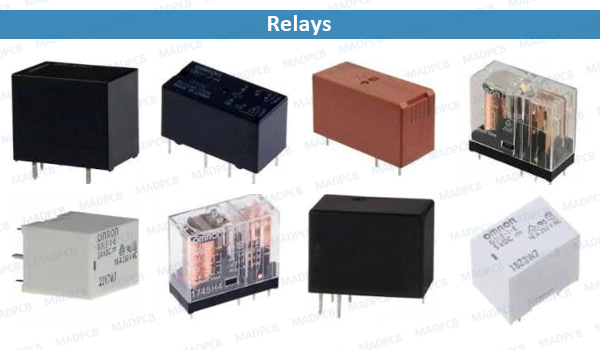Understanding Relays: An In-Depth Explanation
Relays are electrical components commonly used in electronic circuits to switch on/off a load, control the direction of current flow, or protect the circuit from overloads. They switch between the control signal and the load, allowing small signals to control larger electrical devices. This article will look in-depth at relays, their types, working, and applications.
What is a Relay?
A relay is an electrical device that controls one electrical circuit by opening or closing contacts in another. It consists of a coil, an armature, and one or more sets of contacts. The coil is energized by a control signal, which creates a magnetic field that pulls the armature towards it, causing the contacts to either open or close.
Types of Relays
There are several types of relays, including:
Electromagnetic Relays
Electromagnetic relays are the most common type of relay used in electronic circuits. They consist of a coil and a spring-loaded armature, which is attracted to the coil when current flows through it. They can switch high currents and voltages and are available in various configurations, such as single-pole, double-pole, and multi-pole.
Solid State Relays
Solid-state relays (SSRs) use semiconductor devices such as transistors and thyristors or try to switch on/off the load. They have no moving parts, are faster, more reliable, and have a longer life than electromagnetic relays. They are ideal for applications requiring high switching speeds, low noise, or high isolation levels.
Reed Relays
Reed relays consist of a pair of magnetic contacts sealed in a glass envelope filled with an inert gas. They are highly reliable, have low contact resistance, and can switch AC and DC currents. They are commonly used in test and measurement equipment, communication systems, and security devices.
Time Delay Relays
Time delay relays to control the timing of an event in a circuit. They have a built-in delay mechanism that delays the opening or closing of the contacts after the control signal is applied. They are commonly used in control systems, motor starters, and time-delayed switches.
How Relays Work
When the control signal is applied to the relay coil, it creates a magnetic field that pulls the armature towards it, causing the contacts to either open or close. When the contacts open, the load is disconnected from the power supply, and when they close, the load is connected to the power supply. The contacts can normally be open (NO) or normally closed (NC), depending on the application.
Applications of Relays
Relays are used in a wide range of applications, including:
- Control of motors and pumps
- Control of lighting circuits
- Protection of circuits from overload and short circuits
- Time-delayed switching of devices
- Control of heating and cooling systems
- Control of industrial automation systems
Advantages of Relays
Relays offer several advantages, such as:
- Ability to switch high currents and voltages
- Easy to use and install
- Low power consumption
- Low cost
- High reliability and durability
Conclusion
Relays are essential components in electronic circuits that enable small signals to control larger electrical devices. They are available in various types, including electromagnetic, solid-state, reed, and time-delay relays. Relays are widely used in control systems, motor starters, lighting circuits, and industrial automation systems due to their high switching capacity, low power consumption, and low cost.
FAQs
-
What is the difference between NO and NC contacts in a relay?
In a relay, NO and NC contacts refer to the two different positions of the switch. NO stands for Normally Open, which means that the contact is open (i.e., not conducting) when the relay is not energized. When the relay is energized, the contact closes (i.e., becomes conducting), allowing current to flow through it. On the other hand, NC stands for Normally Closed, which means that the contact is closed (i.e., conducting) when the relay is not energized. When the relay is energized, the contact opens (i.e., stops conducting) and interrupts the current flow.
Simply put, NO contacts allow current to flow when the relay is energized, while NC contacts interrupt current flow when the relay is energized. The choice of NO or NC contacts depends on the application requirements and the load switch type.
- How do you choose the right relay for your application?
- To choose the right relay, you need to consider factors such as the type of load you are switching, the voltage and current rating, the required switching speed, and the expected life of the relay. Consult the manufacturer’s datasheet and application notes for guidance.
- What is the difference between an electromagnetic relay and a solid-state relay?
- Electromagnetic relays use a coil and a mechanical armature to switch on/off the load, while solid-state relays use semiconductor devices to switch. Solid-state relays are faster, more reliable, and have a longer life than electromagnetic relays.
- Can relays be used in high-temperature environments?
- Some relays are designed for high-temperature environments and can operate at temperatures up to 200°C or more. Consult the manufacturer’s datasheet for temperature ratings.
- Can a relay be used for DC and AC applications?
- Yes, relays can be used for both DC and AC applications. However, choose the right type of relay for the application, as some relays are designed specifically for AC or DC switching.
